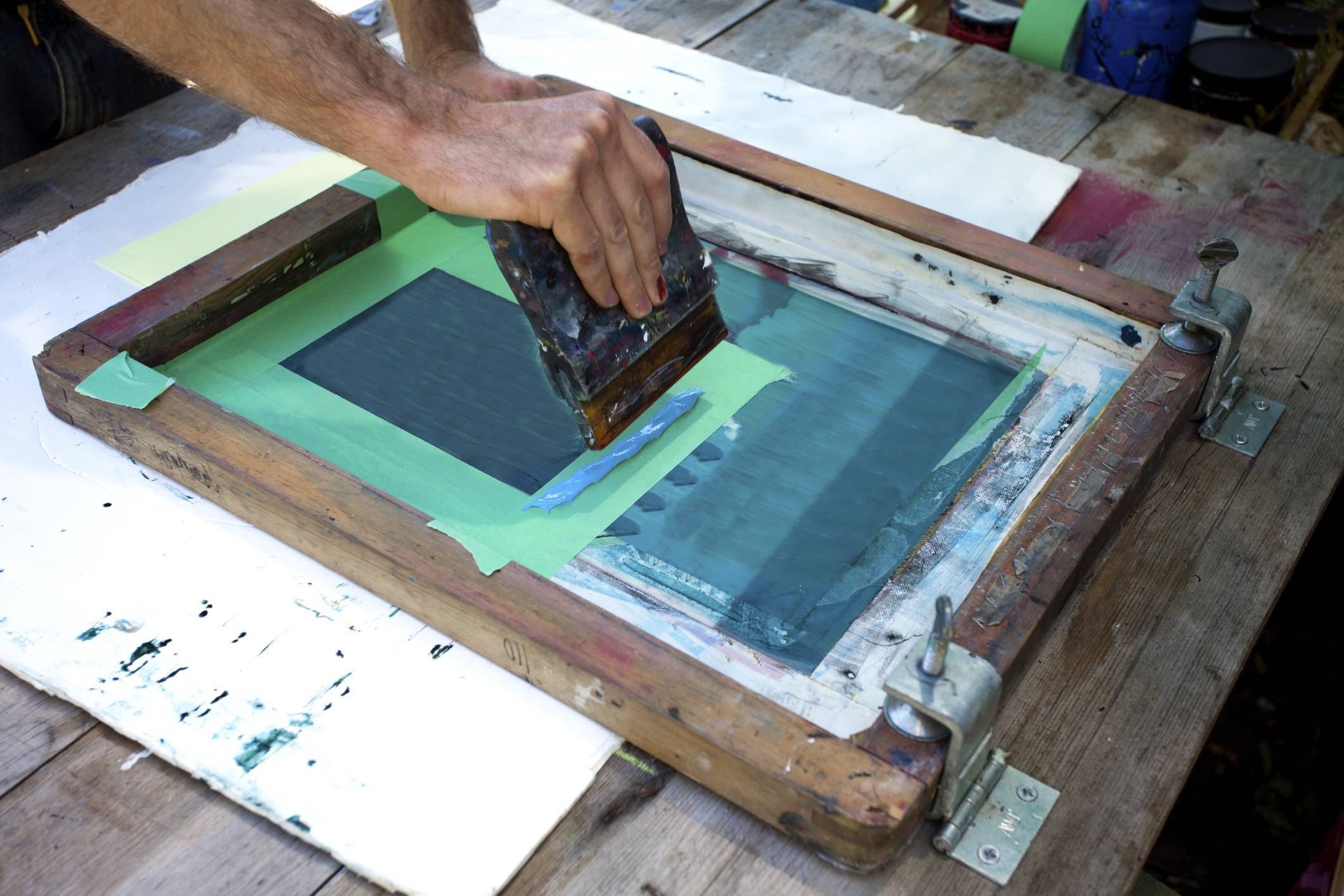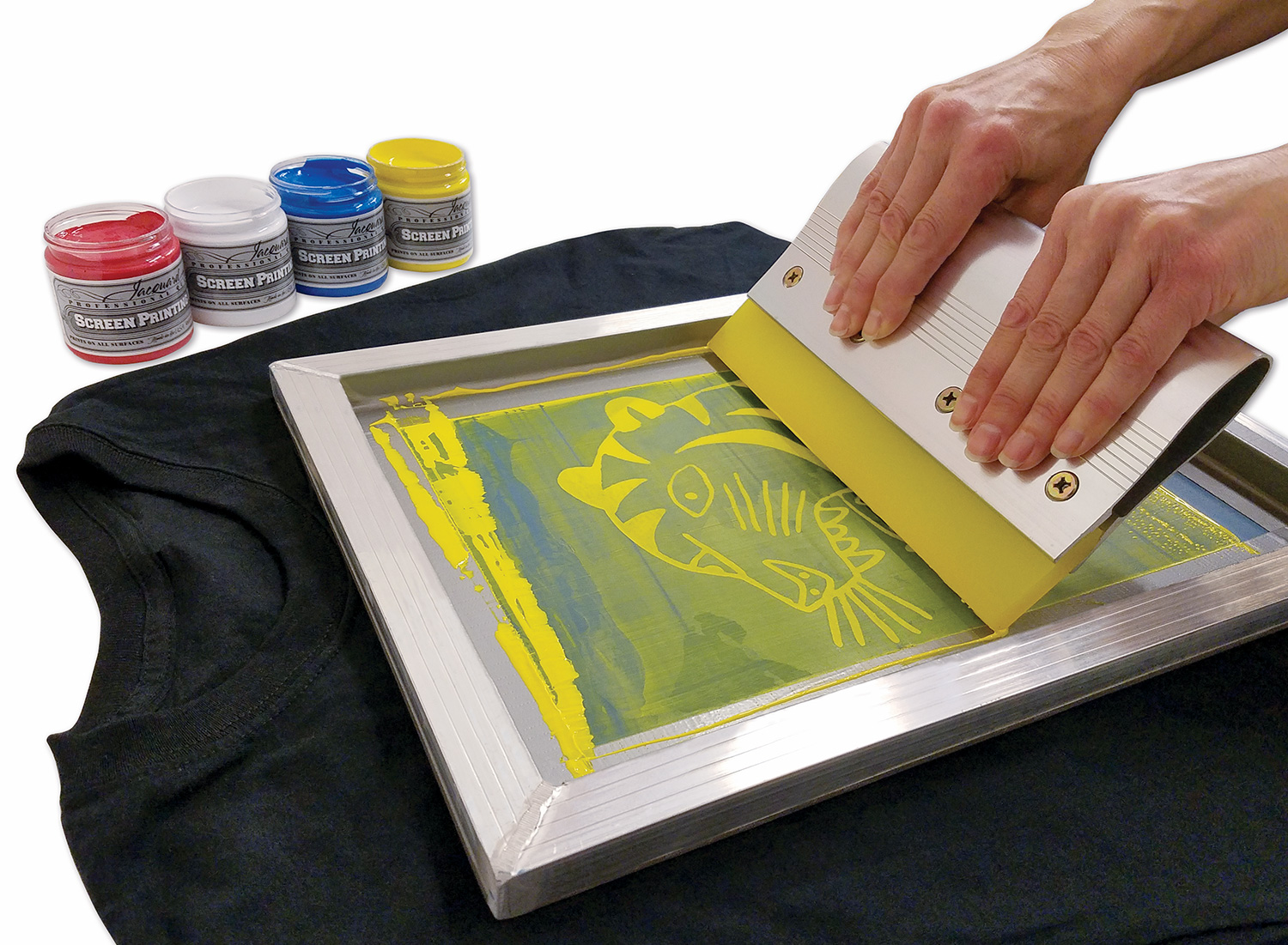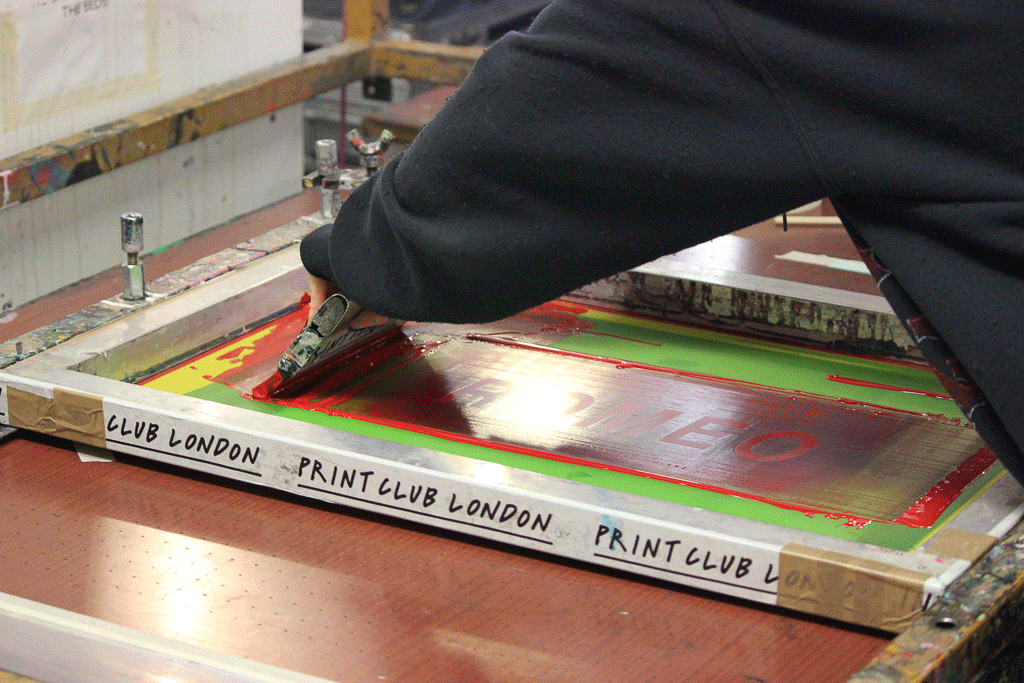ChatGPT said: How to get quick answers through 10:9 Design contact for your next order
Discover the Numerous Sorts Of Screen Printing Techniques for Your Next Project
Screen printing offers a varied series of methods that can improve any type of imaginative task. From traditional techniques like serigraphy to modern developments such as direct-to-garment printing, each approach has its unique advantages. Specialty options, consisting of environmentally friendly and metallic inks, present even much more possibilities. Understanding these techniques can considerably impact the final outcome. Nevertheless, the difficulty lies in selecting one of the most appropriate technique for certain requirements and wanted results. What factors should one think about?

The Fundamentals of Screen Printing
Screen printing may seem facility, it is essentially a straightforward procedure that includes moving ink through a mesh screen onto numerous surfaces. The technique begins with the development of a stencil, which defines the design to be printed. This stencil is affixed to a mesh screen, normally made of polyester or nylon. Once the stencil is in location, ink is related to the screen and pressed via the mesh utilizing a squeegee, resulting in the wanted pattern being printed on the underlying material.
Screen printing can be executed on a vast array of substratums, including paper, textile, and plastic, making it a flexible option for numerous jobs. The procedure permits elaborate designs and dynamic colors, making it preferred in sectors such as marketing, art, and fashion. Recognizing these essentials outfits individuals with the foundational expertise required to check out more innovative strategies in screen printing.
Conventional Screen Printing Techniques
Conventional screen printing methods have been employed for centuries, preserving the craftsmanship and artistry of this technique. This method uses a mesh screen to move ink onto a substratum, such as textile or paper, permitting resilient and vivid styles. The procedure starts with developing a pattern, which blocks certain areas of the screen to control where the ink will certainly be applied.
One prominent method is serigraphy, commonly made use of for restricted versions and imaginative prints. One more is the usage of water-based inks, which are eco-friendly and offer a soft feel on textiles - 10:9 Design Texas. Additionally, standard approaches can include hands-on printing, where craftsmens apply ink with a squeegee, making sure precision and attention to information
These strategies continue to be valued in the industry for their responsive top quality and the unique appearances they produce, interesting both creators and consumers that value the heritage of screen printing.
Digital Screen Printing Innovations
As the demand for faster manufacturing and customization in the printing industry has risen, electronic screen printing technologies have become a game-changer. This modern technology mixes standard screen printing techniques with digital procedures, permitting fast prototyping and intricate layouts that were previously hard to achieve. One considerable advancement is the introduction of direct-to-garment (DTG) printing, which facilitates high-quality, full-color prints on numerous fabrics without the requirement for screens. Additionally, advancements in ink formulations have actually brought about environmentally friendly choices that maintain vivid colors while minimizing environmental effect. Making use of automated systems even more improves production, lowering labor prices and boosting precision. These advancements not just deal with small batch orders and customized styles but additionally allow for quicker turn-around times, making them perfect for organizations focused on meeting consumer demands in a busy market. Digital screen printing, as a result, represents an important development in the domain of printing strategies.
Specialty Screen Printing Techniques
Checking out specialty screen printing methods reveals a varied variety of methods that press the limits of imagination and capability in the printing sector. Among these, glow-in-the-dark inks provide an unique aesthetic impact, making styles come to life in low-light conditions. Metallic inks, recognized for their sparkling finish, include a touch of high-end to printed products. One more cutting-edge technique is discharge printing, which removes color from the material as opposed to adding ink, resulting in a soft, classic feel. High-density printing produces an increased appearance externally, boosting responsive involvement. Additionally, water-based inks are getting popularity for their dynamic shades and minimized ecological impact. Each of these specialty methods provides to specific design needs, enabling artists and brands to develop standout items that reverberate with their audiences. By leveraging these methods, companies can raise their screen printing tasks to new heights, making certain remarkable perceptions.
Eco-Friendly Screen Printing Options
Environment-friendly screen printing choices are gaining grip as the market shifts towards sustainability. Sustainable ink choices and the usage of biodegradable materials are key elements in reducing the ecological effect of the printing procedure. By adopting these practices, screen printers can add to a more sustainable future while preserving top notch outcomes.
Sustainable Ink Options

Biodegradable Products Use
As the screen printing industry progresses, the incorporation of naturally degradable materials is becoming progressively important for eco aware methods. Designers and makers are currently checking out inks and substrates made from all-natural, renewable energies that decompose much more effectively than standard counterparts. These naturally degradable options lower plastic waste and minimize environmental influence, straightening with the growing demand for lasting products.
Typical instances include water-based inks and natural cotton materials, both of which lessen dangerous chemicals and promote eco-friendliness. Brand names that take on these materials usually boost their market appeal, bring in consumers that focus on sustainability. As awareness of environmental problems remains to climb, the change in the direction of naturally degradable materials in screen printing is likely to obtain energy, fostering a greener sector criterion.
Selecting the Right Technique for Your Job
Just how can one figure out the most ideal screen printing technique for a specific project? The choice hinges on numerous aspects, including the product to be printed on, the intricacy of the design, and the wanted production quantity - 10:9 Design Company. Direct-to-garment printing is perfect for complex layouts with various shades, while conventional screen printing stands out for bigger runs of simpler graphics.
Furthermore, consideration of the end-use of the published item is crucial. For outdoor applications, methods that use resilience and climate resistance, such as plastisol ink, may be chosen. On the other hand, environmentally-conscious tasks might profit from eco-friendly products or water-based inks.
Ultimately, understanding the job's one-of-a-kind requirements allows for an informed choice, guaranteeing both aesthetic charm and practical durability. By examining style intricacy, product compatibility, and manufacturing scale, one can efficiently choose the most suitable screen printing strategy to fulfill their job's goals.
Often Asked Concerns
What Is the History of Screen Printing?
Screen printing came from ancient China around 1000 AD, evolving through Japan and Europe. By the 20th century, it came to be preferred in business art and more info style, reinventing exactly how designs were produced and dispersed internationally.

Just how Do I Prepare Artwork for Screen Printing?
To prepare artwork for screen printing, one need to assure high resolution, make use of a suitable color mode, create separate layers for every color, and convert text to describes, guaranteeing compatibility with the printing procedure and preferred result.
What Products Are Finest for Screen Printing?
The very best materials for screen printing include top notch inks, long lasting displays, and appropriate substrates like cotton, polyester, or blends. Furthermore, using suitable emulsion and squeegees can boost the printing procedure and results.
Can I Screen Print at Home?
Yes, screen printing at home is feasible. With the ideal materials, setup, and techniques, individuals can develop high-quality prints. Nonetheless, mindful factor to consider of office and devices is crucial for effective results.

What Prevail Mistakes in Screen Printing?
Usual blunders in screen printing consist of incorrect direct exposure times, poor ink uniformity, misalignment of screens, insufficient cleansing of materials, and ignoring to test prints. These errors can endanger the top quality and accuracy of the end product.
Screen printing may appear facility, it is fundamentally a simple process that entails moving ink with a mesh screen onto various surface areas. As the demand for faster production and customization in the printing sector has actually surged, electronic screen printing innovations have arised as a game-changer. Checking out specialty screen printing approaches exposes a diverse range of techniques that press the limits of creativity and capability in the printing market. The ideal materials for screen printing consist of high-grade inks, sturdy displays, and suitable substratums like cotton, polyester, or blends (10:9 Design reviews). Usual mistakes in screen printing consist of improper direct exposure times, inadequate ink consistency, imbalance of screens, not enough cleaning of materials, and neglecting to check prints